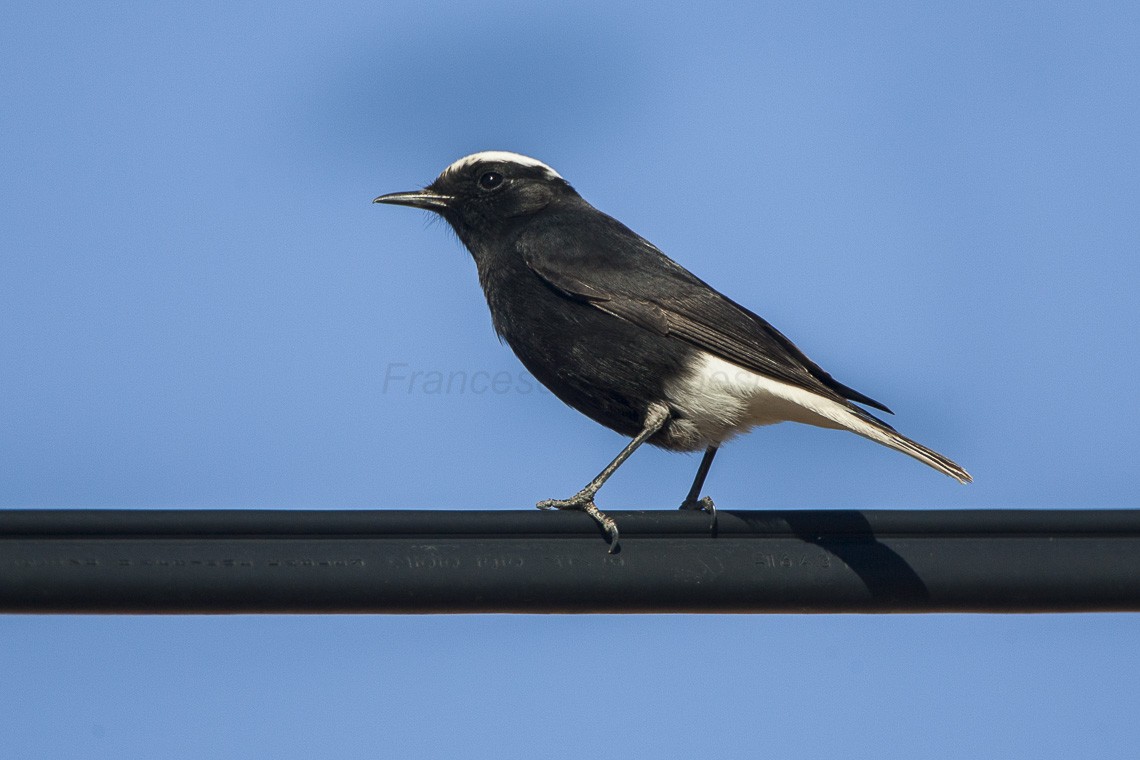White-crowned Wheatear
A species of Wheatears, Also known as White-crowned Black Wheatear Scientific name : Oenanthe leucopyga Genus : Wheatears
White-crowned Wheatear, A species of Wheatears
Also known as:
White-crowned Black Wheatear
Botanical name: Oenanthe leucopyga
Genus: Wheatears
Content
Description General Info
 Photo By Francesco Veronesi , used under CC-BY-SA-2.0 /Cropped and compressed from original
Photo By Francesco Veronesi , used under CC-BY-SA-2.0 /Cropped and compressed from original Description
The white-crowned wheatear, or white-crowned black wheatear (Oenanthe leucopyga) is a wheatear, a small passerine bird that was formerly classed as a member of the thrush family Turdidae, but is now more generally considered to be an Old World flycatcher, Muscicapidae. This large 17–18 cm long wheatear breeds in stony deserts from the Sahara and Arabia across to Iraq. It is largely resident but has occurred as a rare vagrant to western Europe as far away as Great Britain. It nests in crevices in rocks or walls laying 3-5 eggs. Although most wheatear species have distinctive male and female plumages, adults of both sexes of this species are black except for a white rump and mainly white tail. Full adults have a white crown, not shown by young birds. The similar black wheatear, Oenanthe leucura, also breeds in the western part of the white-crowned wheatear's range, but the latter has a black inverted T on its white tail, whereas white-crowned has only a black centre to its tail. The black wheatear never has a white crown. This species mainly eats insects. This wheatear has a loud song, more varied than most of its relatives and often including mimicry. 
Size
17 cm
Colors
Black
White
Nest Placement
Ground
Feeding Habits
White-crowned Wheatear primarily consumes insects, employing ground foraging techniques. Unique adaptations aid in exploiting this insectivorous diet. Nocturnal feeding is uncommon.
Habitat
White-crowned Wheatear primarily inhabits arid stony deserts and rocky terrains such as boulders, dry riverbeds, and wadis, extending to elevations up to 3000 meters. Adapted to the extreme temperatures of the hottest parts of Africa and the Middle East, it dwells in areas with sparse vegetation, often near the 30°C July isotherm, including man-made structures like ruins. It occasionally occupies sandier locales and slightly wetter conditions.
Dite type
Insectivorous
General Info
Feeding Habits
Bird food type
Species Status
Not globally threatened.
Scientific Classification
Phylum
Chordates Class
Birds Order
Perching birds Family
Old world flycatchers Genus
Wheatears Species
White-crowned Wheatear